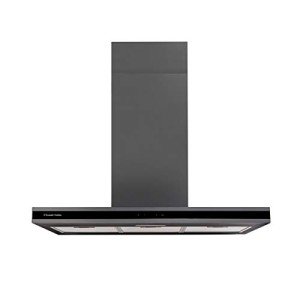Island Extractor Hoods Tools To Ease Your Everyday Lifethe Only Island…
페이지 정보

본문

Island Extractor Hoods: The Ultimate Guide to Choosing and Maintaining Your Kitchen's Ventilation System
In contemporary kitchen areas, an island extractor hood is not just a functional need, it also acts as a centerpiece that boosts the aesthetic of the area. As open-concept living environments continue to rise in popularity, understanding the functions, advantages, and upkeep of island chimney hood extractor hoods becomes important for homeowners. This post will dive into the different elements of island extractor hoods, helping readers make notified decisions based on their kitchen requires.
What Are Island Extractor Hoods?
Island extractor hoods are ventilation systems developed to be mounted above kitchen islands, ensuring efficient air purification while mixing effortlessly with the kitchen's design. Unlike standard range hoods that are usually mounted versus a wall, black island cooker hoods hoods are suspended from the ceiling, which offers more flexibility in kitchen designs.
The main function of an island extractor hood is to eliminate air-borne grease, smoke, steam, and smells created throughout cooking, therefore improving indoor air quality. This is specifically crucial in open-concept homes where the kitchen is integrated into the living space.
Benefits of Island Extractor Hoods
There are numerous advantages to installing an island extractor hood in your kitchen:
Improved Air Quality: They filter and expel toxins, ensuring a much healthier cooking environment.
Design Flexibility: Available in different sizes, styles, and surfaces, they can complement any kitchen design.
Enhanced Lighting: Many designs come geared up with integrated lighting, illuminating the cooking surface area below.
Sound Reduction: Modern designs are developed to run quietly, lessening disruptions in an open-concept design.
Improved Home Value: A well-chosen island chimney hood hood can increase the aesthetic and functional appeal of a kitchen, consequently boosting home value.
Secret Features to Consider
When picking an island extractor hood, a number of functions ought to be taken into account:
| Feature | Description |
|---|---|
| Size | Choose a hood that is comparable to or a little bigger than the cooking surface dimension. |
| Extraction Rate | Measured in CFM (cubic feet per minute), this rate shows how much air the hood can move. |
| Filtering Type | Choices include ducted (vented) and ductless (non-vented) systems, depending upon home layout and preferences. |
| Control Type | Think about easy to use controls; alternatives consist of mechanical buttons, touch controls, or remote controls. |
| Noise Level | Inspect the sone ranking; lower rankings suggest quieter operation, crucial for open areas. |
| Lighting | Try to find models with built-in LED lights for improved presence while cooking. |
Setup Types
There are 3 primary setup types you can pick from for island extractor hoods:
Ducted Hoods: These use ductwork to expel air outside the home. They are normally more efficient but require a more complex installation procedure.
Ductless Hoods: These recirculate filtered air back into the kitchen. They are much easier to install however might need more frequent filter replacements.
Convertible Hoods: This type can be adapted to run as either ducted or ductless, offering flexibility based on the house owner's needs.
FAQs About Island Extractor Hoods
What is the ideal height to install an island extractor hood?
The ideal height for installation is generally 30-36 inches above the cooking surface. However, this might vary depending on the specific model and the user's height.
How do I tidy and preserve my island extractor hood?
Routine maintenance is crucial for ideal performance.
- Clean the exterior utilizing a mild soap solution and a soft fabric.
- Replace or clean filters as suggested by the manufacturer.
- Ensure the ducting system is clear of blockages if using a ducted model.
How typically should I change the filters?
For ductless hoods, charcoal filters need to ideally be replaced every 6 to 12 months, while grease filters might need more regular cleansing, such as every 2-4 weeks, depending on usage.
Are island extractor hoods energy-efficient?
Numerous models are created with energy-efficient motors and island extractor hood LED lighting choices. Search for products that boast ENERGY STAR accreditations or comparable ratings.
Can I install an island extractor hood myself?
While some may choose to undertake the setup, it's suggested to hire an expert, especially for ducted systems, to ensure safety and appropriate fitting.
Maintenance Tips for Island Extractor Hoods
To ensure longevity and efficiency, think about the following maintenance practices:
Regular Cleaning: Clean grease filters, baffle filters, and the outside surface regular monthly to prevent accumulation.
Examine Ductwork: Inspect duct systems for obstructions or damage every six months, ensuring ideal airflow.
Replace Filters: Follow producer standards for replacing or island extractor hood cleaning filters to preserve air quality.
Display Performance: If you observe minimized airflow or increased noise, it may be time to consult an expert for repair work or maintenance.
Island extractor hoods have actually developed significantly, providing sophisticated features and abilities that not just boost kitchen efficiency but also raise home aesthetics. By thoroughly thinking about size, purification type, and setup choices, house owners can pick the ideal island hood for their needs. Routine maintenance ensures performance and sturdiness, making this kitchen appliance an important financial investment for any household. Whether updating an existing hood or setting up a brand-new one, comprehending these systems is vital for achieving a practical and elegant kitchen environment.
- 이전글See What Dual Fuel Range Cookers Ireland Tricks The Celebs Are Making Use Of 25.05.19
- 다음글How To show SNS TIPS (no Refill) In Long Island City Better Than Anyone Else 25.05.19
댓글목록
등록된 댓글이 없습니다.



